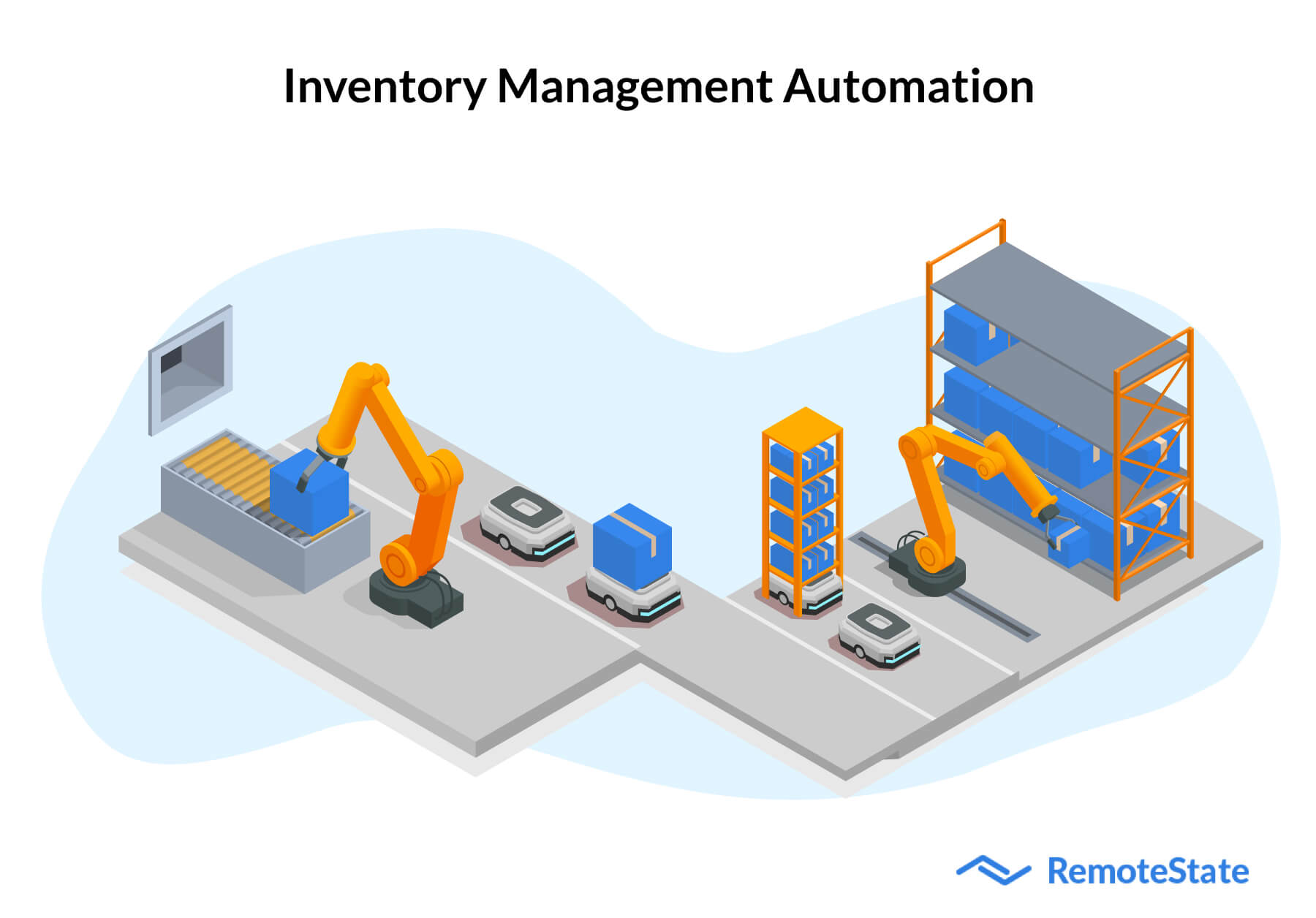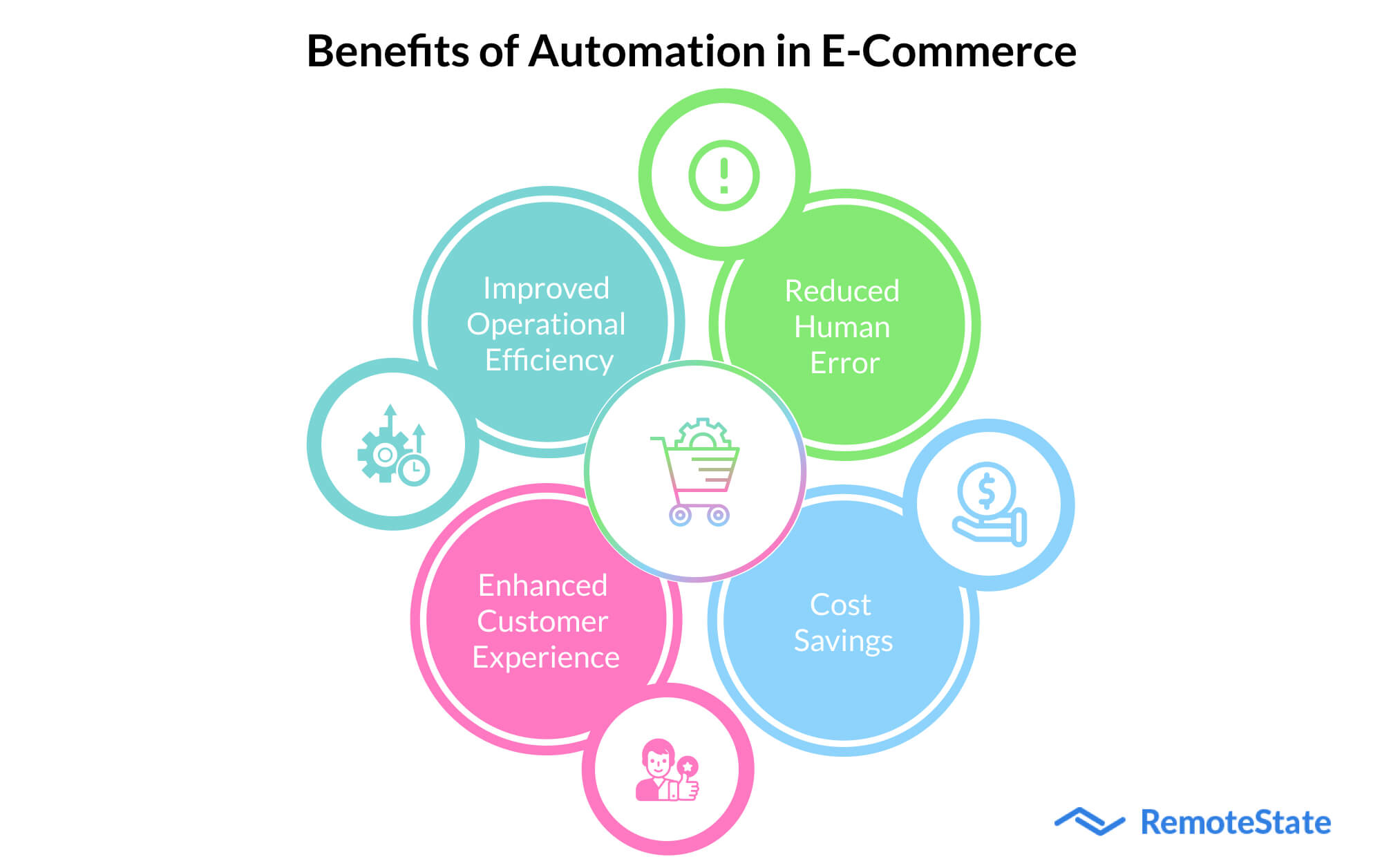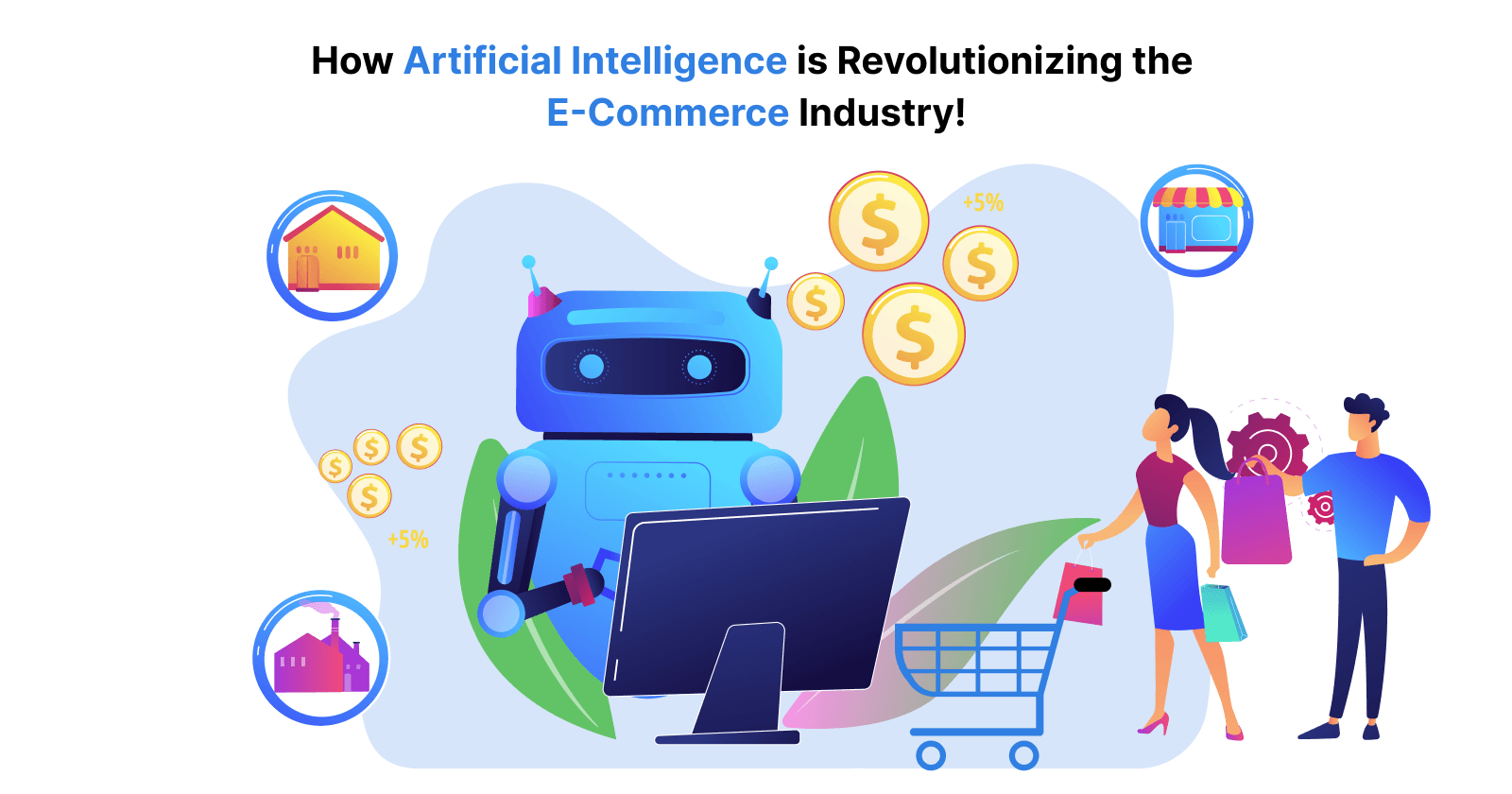Introduction
E-commerce has revolutionized the retail industry, offering customers the convenience of shopping from the comfort of their homes, and retailers the ability to expand their customer base beyond geographical boundaries.
E-commerce has revolutionized the retail industry, offering customers the convenience of shopping from the comfort of their homes, and retailers the ability to expand their customer base beyond geographical boundaries. However, as e-commerce has grown, so has the complexity of managing inventory, fulfilling orders, and providing excellent customer service.
To keep up with the increasing demand and competition, e-commerce businesses are turning to automation and technology to streamline their operations and boost efficiency. In this blog, we will explore the various ways in which automation is being used in e-commerce to improve operations and enhance the customer experience.
Introduction to Automation in E-commerce
Automation in e-commerce refers to the use of technology to automate various tasks and processes in the e-commerce supply chain, from order management and fulfillment to inventory management, customer service, and marketing.
Automation in e-commerce enables businesses to reduce human error, save time, and lower costs while improving operational efficiency and providing customers with a better experience.
Order Management Automation
Order management is a critical component of e-commerce operations. It involves receiving orders, processing payments, and managing inventory to ensure that orders are fulfilled in a timely and efficient manner.
Order management automation involves the use of technology to streamline these processes, from the moment a customer places an order to the point where it is shipped and delivered.
There are various order management systems available that can be integrated with e-commerce platforms such as Shopify, Magento, and WooCommerce.
These systems automate the process of receiving and processing orders, updating inventory levels, and sending shipping information to customers. They also enable businesses to manage multiple sales channels, such as Amazon and eBay, from a single platform, reducing the need for manual updates and increasing accuracy.
Inventory Management Automation

Inventory management is a crucial aspect of e-commerce operations. It involves monitoring inventory levels, tracking product movement, and restocking products when necessary.
Inventory management automation involves the use of technology to streamline these processes, reducing the risk of stockouts and overselling, and improving the accuracy of inventory data.
There are various inventory management systems available that can be integrated with e-commerce platforms. These systems automate the process of receiving and updating inventory data, enabling businesses to manage their inventory levels more efficiently.
Some of the advanced inventory management systems use artificial intelligence and machine learning to predict demand and optimize stock levels.
Fulfillment Automation
Fulfillment refers to the process of getting products from the warehouse to the customer. Fulfillment automation involves the use of technology to streamline this process, reducing the time and cost involved in getting products to customers.
One of the most popular fulfillment automation solutions is third-party logistics (3PL) providers such as Amazon FBA, ShipBob, and ShipStation.
These providers offer services such as warehousing, picking, packing, and shipping, reducing the need for businesses to manage their own fulfillment operations. By outsourcing fulfillment, businesses can focus on other aspects of their operations, such as marketing and customer service.
Customer Service Automation
Providing excellent customer service is crucial for e-commerce businesses to retain customers and build loyalty. However, customer service can be time-consuming and resource-intensive, especially for businesses that receive a high volume of inquiries. Customer service automation involves the use of technology to streamline these processes, enabling businesses to provide a better customer experience while reducing the workload on customer service teams.
One of the most common customer service automation solutions is chatbots. Chatbots use artificial intelligence to provide customers with instant responses to their inquiries, reducing the need for human intervention.
Chatbots can handle a wide range of inquiries, from tracking orders to providing product recommendations, and can be integrated with popular messaging apps such as Facebook Messenger and WhatsApp.
Marketing Automation
Marketing is an essential component of e-commerce, enabling businesses to attract and retain customers. Marketing automation involves the use of technology to automate various marketing processes, from email campaigns to social media advertising.
Email marketing automation involves the use of email marketing software to send targeted emails to customers based on their behavior and preferences.
These emails can include product recommendations, promotional offers, and personalized messages, increasing the likelihood of customers making a purchase. Social media advertising automation involves the use of software to create and manage social media ads, reducing the time and cost involved in creating and running ads.
Data Analysis and Reporting Automation
Data analysis and reporting are essential for e-commerce businesses to make informed decisions and optimize their operations. Data analysis and reporting automation involve the use of technology to collect, analyze, and present data in a way that is easy to understand and use.
There are various data analysis and reporting tools available, such as Google Analytics and Tableau, that can be integrated with e-commerce platforms.
These tools enable businesses to track various metrics, such as website traffic, conversion rates, and customer behavior, and generate reports that provide insights into their operations. By automating data analysis and reporting, businesses can make data-driven decisions more efficiently and effectively.
Benefits of Automation in E-commerce

Automation in e-commerce offers numerous benefits, including:
Improved operational efficiency
Automation enables businesses to streamline their operations, reducing the time and cost involved in various tasks and processes.
Reduced human error
Automation reduces the risk of human error, improving the accuracy of data and increasing the efficiency of operations.
Enhanced customer experience
Automation enables businesses to provide a better customer experience, from faster order fulfillment to more personalized marketing.
Cost savings
Automation reduces the need for manual labor, reducing the cost of operations and increasing profitability.
Challenges of Automation in E-commerce
While automation in e-commerce offers numerous benefits, it also presents various challenges, including:
Cost
Implementing automation solutions can be expensive, especially for small businesses with limited budgets.
Integration
Integrating various automation solutions with e-commerce platforms can be complex and time-consuming, requiring technical expertise and resources.
Customization
Automation solutions may not be fully customizable, limiting the ability of businesses to tailor them to their specific needs.
Security
Automation solutions may present security risks, such as the risk of data breaches, requiring businesses to implement additional security measures.
Future of Automation in E-commerce
The future of automation in e-commerce is promising, with the development of new technologies such as artificial intelligence, machine learning, and robotics.
These technologies offer the potential to automate even more tasks and processes, improving operational efficiency and providing customers with an even better experience. However, as with any technology, businesses must carefully consider the costs and benefits of automation and ensure that they implement solutions that align with their specific needs and goals.
Conclusion
Automation is revolutionizing the e-commerce industry, enabling businesses to streamline their operations, reduce the risk of human error, and provide a better customer experience.
From order management and inventory management to fulfillment, customer service, and marketing, there are numerous automation solutions available that can help businesses save time and money while improving efficiency.
While automation offers numerous benefits, it also presents various challenges that businesses must carefully consider.
These include the cost of implementing automation solutions, the need for technical expertise, and the risk of security breaches. By carefully considering the costs and benefits of automation and implementing solutions that align with their specific needs and goals, businesses can reap the rewards of automation and stay competitive in an increasingly digital world.
E-Commerce Operations with Automation: How Remotestate Can Help?
As businesses continue to navigate the complexities of the digital landscape, the need for streamlined and efficient operations has become increasingly important. With the rise of e-commerce, businesses are looking to automation to help them manage their operations and boost their efficiency.
Remotestate can provide valuable expertise and guidance to businesses seeking to implement automation solutions that align with their specific needs and goals. By offering comprehensive support and staying up-to-date with the latest technological advancements, Remotestate can help businesses make the most of their automation investments and stay competitive in the rapidly evolving e-commerce landscape.
FAQ's
Q. What is the role of automation in e-commerce?
Automation in e-commerce enables businesses to streamline their operations, reduce the risk of human error, and provide a better customer experience. By automating tasks and processes such as order management, inventory management, fulfillment, customer service, and marketing, businesses can save time and money while improving efficiency.
Q. What are some common automation solutions used in e-commerce?
Some common automation solutions used in e-commerce include order management systems, inventory management systems, third-party logistics providers, chatbots, email marketing software, social media advertising software, and data analysis and reporting tools.
Q. What are the benefits of automation in e-commerce?
The benefits of automation in e-commerce include improved operational efficiency, reduced human error, enhanced customer experience, and cost savings.
Q. What are the challenges of automation in e-commerce?
The challenges of automation in e-commerce include cost, integration, customization,
security, and the need for technical expertise.
Q. How can businesses decide which automation solutions to implement?
Businesses should carefully consider their specific needs and goals when deciding which automation solutions to implement. They should also consider factors such as cost, integration, customization, and security, and seek input from technical experts and industry professionals.
Publication Date
2023-02-24
Category
E-Commerce
Author Name
Rahul Agrawal


